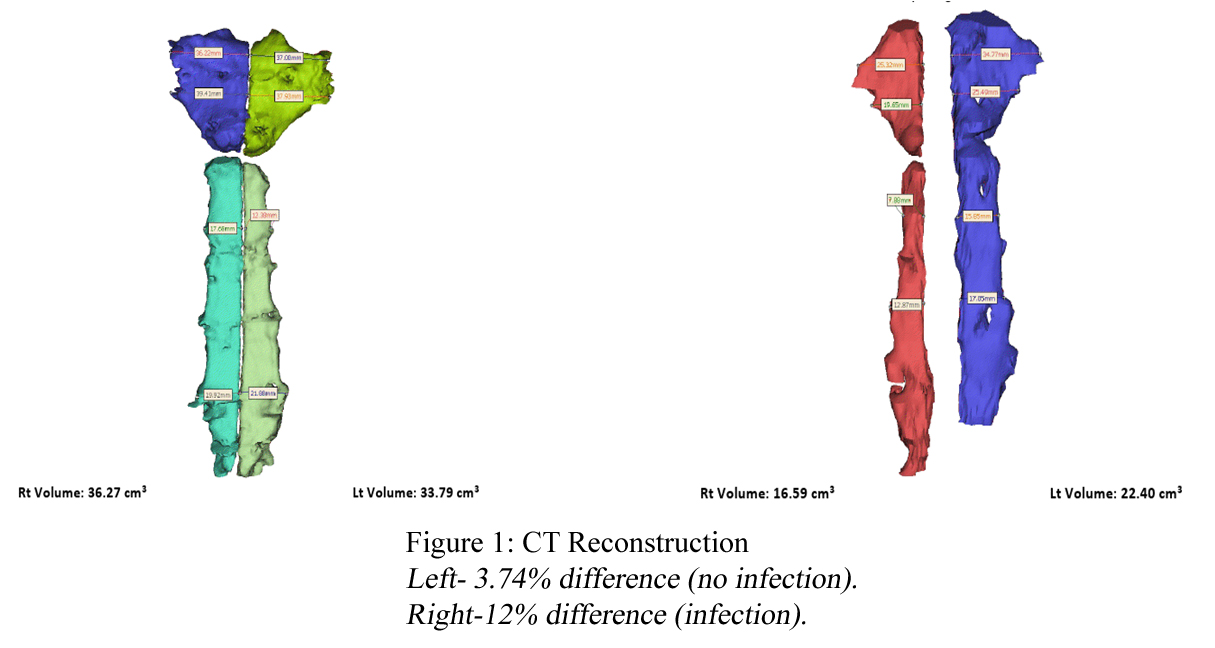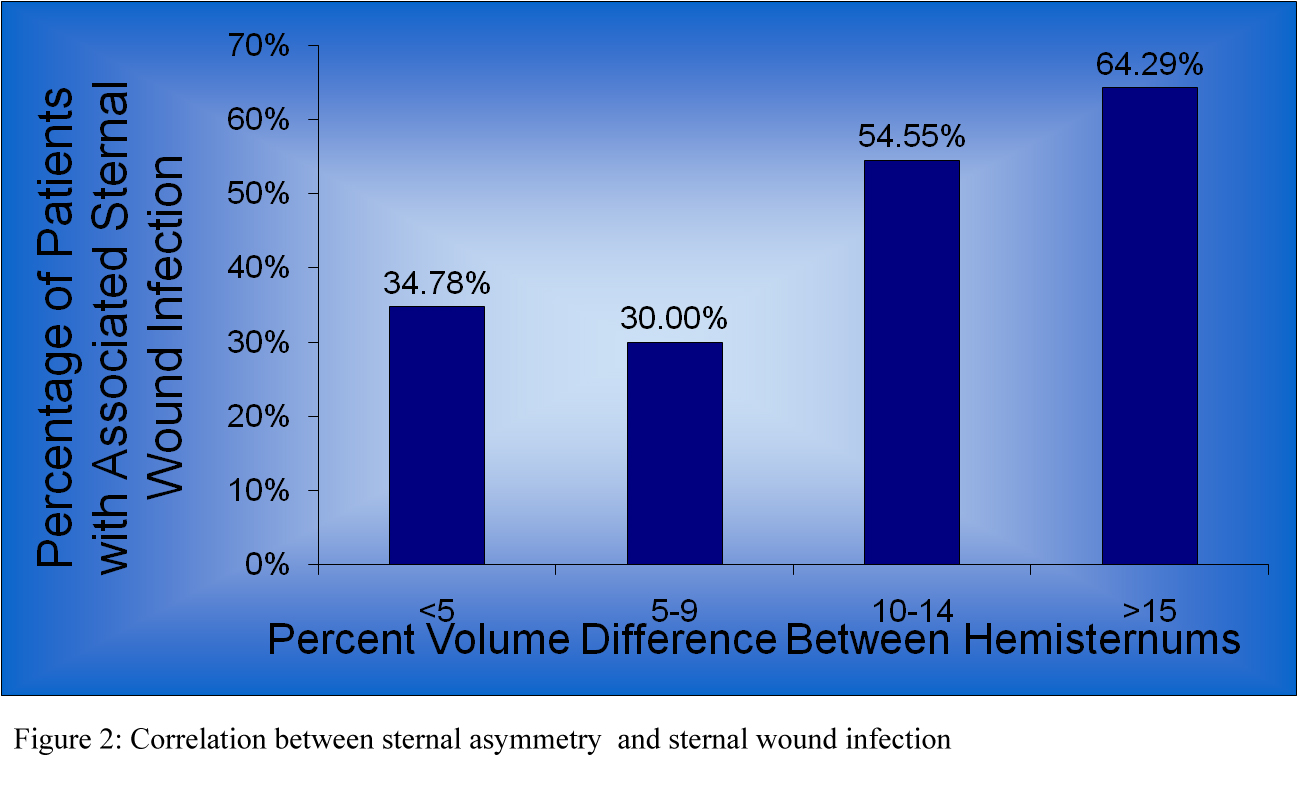|
|
 |
Back to Program Outline
Back to Posters
Topic:
USE OF THREE-DIMENSIONAL COMPUTED TOMOGRAPHY SCAN RECONSTRUCTION TO ASSESS THE ASSOCIATION OF ASYMMETRIC STERNOTOMY AND STERNAL WOUND COMPLICATIONS
Joshua Y. Jacobson, BS1, Matthew Doscher, MD2, William Rahal, MD2, Patricia Friedmann, M.S.3, David D’Alessandro, MD4, Evan Garfein, MD2.
1Albert Einstein College of Medicine, Bronx, NY, USA, 2Montefiore Medical Center, Division of Plastic and Reconstructive Surgery, Bronx, NY, USA, 3Montefiore Medical Center, Department of Surgery, Bronx, NY, USA, 4Montefiore Medical Center, Department of Cardiovascular and Thoracic Surgery, Bronx, NY, USA.
BACKGROUND:
Following a midline axial sternotomy, sternal wound complications can occur, including dehiscence and sternal wound infection, resulting in significant morbidity and mortality. Previous studies have identified several risk factors for sternal wound complications but the influence of an asymmetric sternotomy has not been thoroughly investigated. The goal of this study is to use 3-D sternal CT reconstruction as a tool to objectively measure sternal asymmetry and assess the relationship between sternal asymmetry and sternal wound infection.
METHODS:
This was a retrospective case-control study. Patients were included in the study if they underwent a midline sternotomy and received a post-operative CT scan between 2009 and 2010. Cases were comprised of all patients who had a sternal wound infection after undergoing sternotomy. Controls were comprised of a randomly selected group of patients without infection but with a post-sternotomy CT-scan. Sample was comprised of 26 cases and 31 controls. Patients’ clinical and demographic characteristics were recorded. 3D reconstruction of CT scans were rendered and used to calculate sternal volumes (Figure 1). The degree of sternal asymmetry was determined by calculating the difference between the left and right sternal halves and was expressed as percentage of total sternal volume.
RESULTS:
Patients with ≥10% sternal asymmetry were found to have a higher rate of sternal wound infection than those with <10% asymmetry (60% vs. 33%, p=0.043). Multivariate logistic regression analysis showed asymmetric sternotomy ≥ 10% to be an independent risk factor for developing sternal wound infection (OR=3.6, p=0.03). Furthermore, as the extend of asymmetry increased, the risk of developing sternal wound infection increased (Figure 2).
CONCLUSIONS:
Our data suggests an association between asymmetric sternotomy and sternal wound infection. We recommend an assessment of sternal asymmetry to be done in patients with sternal wound infection and if it is found to be ≥ 10%, the surgeon should implement measures that stabilize the sternum.
 
Back to Program Outline
Back to Posters
|








